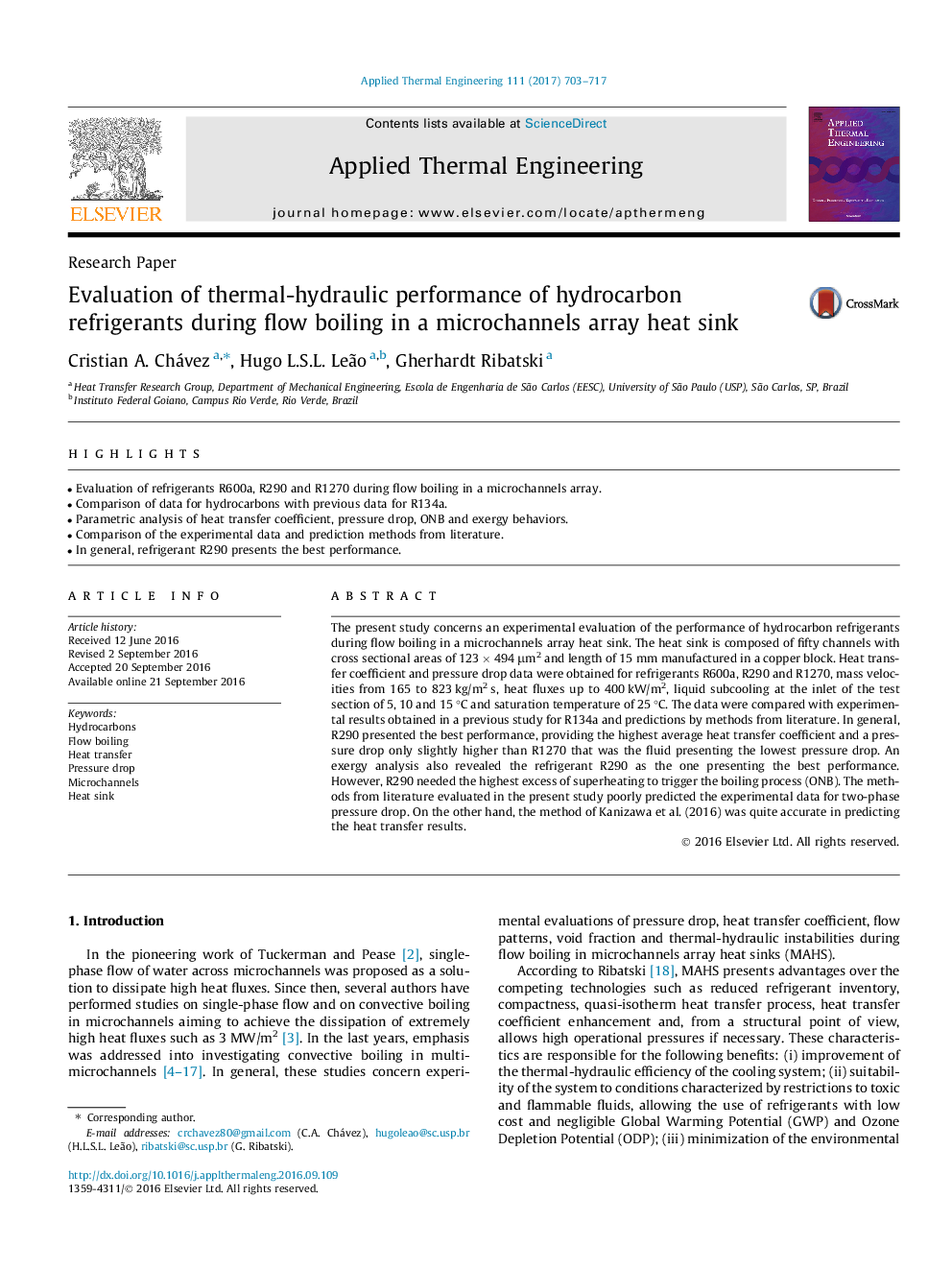| Article ID | Journal | Published Year | Pages | File Type |
|---|---|---|---|---|
| 4992154 | Applied Thermal Engineering | 2017 | 15 Pages |
â¢Evaluation of refrigerants R600a, R290 and R1270 during flow boiling in a microchannels array.â¢Comparison of data for hydrocarbons with previous data for R134a.â¢Parametric analysis of heat transfer coefficient, pressure drop, ONB and exergy behaviors.â¢Comparison of the experimental data and prediction methods from literature.â¢In general, refrigerant R290 presents the best performance.
The present study concerns an experimental evaluation of the performance of hydrocarbon refrigerants during flow boiling in a microchannels array heat sink. The heat sink is composed of fifty channels with cross sectional areas of 123 Ã 494 μm2 and length of 15 mm manufactured in a copper block. Heat transfer coefficient and pressure drop data were obtained for refrigerants R600a, R290 and R1270, mass velocities from 165 to 823 kg/m2 s, heat fluxes up to 400 kW/m2, liquid subcooling at the inlet of the test section of 5, 10 and 15 °C and saturation temperature of 25 °C. The data were compared with experimental results obtained in a previous study for R134a and predictions by methods from literature. In general, R290 presented the best performance, providing the highest average heat transfer coefficient and a pressure drop only slightly higher than R1270 that was the fluid presenting the lowest pressure drop. An exergy analysis also revealed the refrigerant R290 as the one presenting the best performance. However, R290 needed the highest excess of superheating to trigger the boiling process (ONB). The methods from literature evaluated in the present study poorly predicted the experimental data for two-phase pressure drop. On the other hand, the method of Kanizawa et al. (2016) was quite accurate in predicting the heat transfer results.
